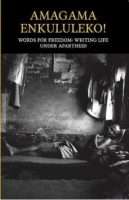Earlier, in August of 1954 – nine months prior to the first removals, various individuals; churchmen, politicians to the left, social workers and political scientists, local and foreign – had warned the Prime Minister, Dr Hendrik Verwoerd, that his decision to resettle the urban Africans of Johannesburg’s western areas on an ethnic basis would result in faction warfare. Spokesmen from white, liberal-orientated organisations also expressed grave misgivings about the enforcement of tribal Apartheid on Africans who had lived in cosmopolitan townships such as Vrededorp, Alexandra Township and Sophiatown. Certain Native Advisory Board officials – known at the time for their docility regarding politically contentious matters – publicly opposed Verwoerd’s proposals, which they said would only exacerbate the tensions already created by the government’s decision to remove the Africans at gunpoint if need be. The white anti-government groups said Verwoerd’s plan would further frustrate relations between the state and the African people, who saw the policy as another ‘divide-and-rule’ tactic.
But Verwoerd was determined to rewrite history and show the world and South Africa that the Boers were not only masters of their own destinies, but also the captains of black people’s souls.
Meadowlands and Diepkloof, which were to accommodate the African people evicted from the cosmopolitan townships, were accordingly divided into tribal sub-sections, the Nguni language groups, with the Shangaans and Vendas, carefully separated from the Sothos and Tswanas. The single-sex hostels for migrant workers, in these areas and in Dube, housed mostly Zulus.
Verwoerd had told South Africa and the world that ethnic separation would not cause any violence. But in early September of 1957, bloody battles began in Meadowlands and Dube and several other south-western townships of Johannesburg. Hundreds of Zulus and Basothos fought each other savagely with an assortment of weapons, ranging from guns to home-made swords. Forty men died, five of whom were Zulu warriors, shot dead by police using sten guns. More than a hundred Africans were admitted to hospitals, and some of them later died of their wounds.
The odour of death pervaded the township of Meadowlands as strong units of police cordoned off the danger spots only after much damage. Bloodstained weapons were scattered on the dusty township streets and cries of protest and fear echoed in the halls, the churches and the corridors of the white Parliament, but Verwoerd would not relent.
The tribal wars spread to the single-sex hostels in the city of Johannesburg and outlying Reef areas, increasing the death toll as well as the number of injured and maimed. The government’s policy of enforced tribal grouping was roundly condemned and blamed as the primary cause of the inter-tribal slaughtering. The rage of unrest – which the police had guaranteed the frightened white voters would not come to the city – sparked off at several mines. Police gunfire and baton-charges were the order of the day. The death toll rose as fierce violence continued. The Basotho clan – known as ‘Russians’ or ‘Ma-Russia’ lost several top men. Zulu faction leaders claimed the police had sided with the Russians – and some people in the city laughed at the paradox – the South African Police in league with Russians – while death continued to ravage the townships.
But the stubborn and arrogant Verwoerd blamed the tsotsi element and sternly warned that ‘hooligans’ would be deported to their ‘home’ territories, whatever that meant.
A newspaper editorial in The Star of 16 September 1957 ran: ‘The brutal and bloody clashes between Zulu and Basotho factions in the townships indicate both a residual savagery among many Native people of our urban communities and a failure of the European civilisation mission …’ The Star was an opposition paper!
Crime reporters wrote that Mau-Mau tactics were being used in the clashes. The police were praised for their firm action in quelling the unrest.
The white local authority councillors blamed the government’s ethnic grouping policy. But the shrewd Dr Verwoerd blamed the local authorities for lack of control over their so-called ‘tsotsi element’. Government-supporting whites believed Verwoerd’s analysis. And while the whites blamed each other, scores of Africans were butchered to death.
More than three thousand policemen and soldiers were put on alert as the clashes continued. African homes were raided for weapons and ‘unemployed hooligans’. The white policemen were armed with automatic guns and rifles and their black colleagues carried spears. The raids were apparently effective for by late September of 1957, all was quiet for a while. The peace pow wows arranged by ‘concerned’ whites and frightened black leaders came to nothing because leaders of warring factions, especially the Zulus, refused to attend the meetings.
The local authority instituted its own commission of inquiry in view of the government’s refusal to probe the tribal violence. Three retired judges, A van der Sandt Centlivres, E R Roper and L Greenberg agreed to head the commission.


